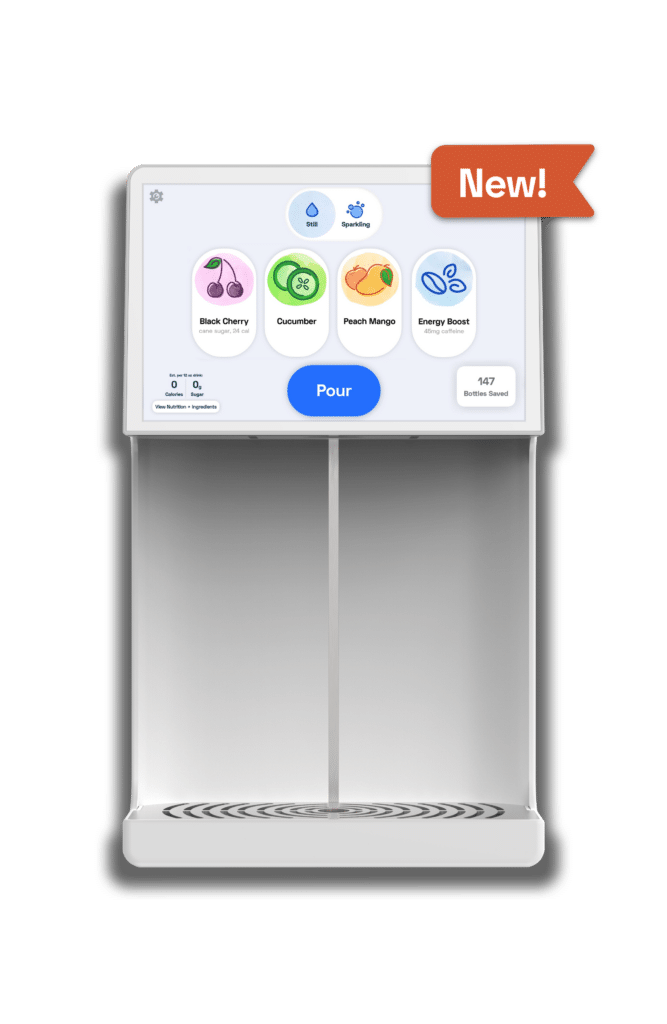We’ve already discussed how to stay green and clean when you return to the office. We’ve also covered eating healthy and staying hydrated and the impact these can have on your health, your work, and the environment. There’s one more piece of the pie, though, if you really want to take your office sustainability to the top.
We’re talking about composting at work. The US Department of Agriculture estimates food waste at between 30-40% of the food supply. What’s worse is that sending organic materials to the landfill instead of the compost pile actually contributes to greenhouse gas production. I know I’ve felt a little guilty cleaning out the fridge and sending uneaten greens and overripe fruit into the garbage so let’s talk about the best way to compost this food and make your office even greener.
Setting up an effective system for composting at work is a lot quicker and easier than you think, and it’s a great way to get the whole office working together for a common good. Let’s dive in!
The benefits of composting
In addition to the weight it lifts off your conscience, there are many tangible benefits to the compost your office will produce. The National Resources Defense Council (NRDC) counts these among the main benefits of composting:
- Reduces the waste stream
- Cuts methane emissions from landfills
- Improves soil health and lessens erosion
- Conserves water
- Reduces personal food waste
- Creates a natural fertilizer
Not only is processing food waste costly from a financial perspective, but when this organic matter gets buried beneath plastic and other trash, it’s forced to undergo anaerobic decomposition rather than the aerobic process that occurs in a compost bin. The lack of oxygen in the former leads to gaseous byproducts like methane and carbon dioxide, two of our most notorious greenhouse gases.
Ready to start your office’s own composting program or to compost better than you already are? Here’s some composting 101 to get you moving in the right direction.
How to set up a compost program at work
Make a Plan
Get an idea of how much food waste your office produces on a weekly basis. Ask yourself how many collection bins it will take to hold them. Consider where you’ll put the bins so that they’re convenient enough to form a habit for your team but are still a bit out of the way.
Next, you’ll want to figure out how your compost will be collected. Unless your office is on the scale of an Etsy or a Bloomberg, you likely don’t have a garden on the roof where you can implement your own full-cycle compost system. That’s ok, neither do we! Look into whether or not your city offers curbside pickup or if a nearby community garden allows dropoff during working hours. Composting is happening all around you (even in urban settings), and these community groups will be happy to help you get started.
What can you compost?
The general rule of thumb is that anything that’s grown in the ground can be returned there via compost. For the office, this includes:
- Fruits
- Vegetables
- Coffee grounds and tea bags
- Leaves that fall off desk plants
- Small bits of paper (think shredded documents, paper towels, etc.)
What can’t you compost?
Though some of these things do break down eventually and won’t harm your compost, it’s best to steer clear of items that produce odor problems or attract pests. These include but aren’t limited to:
- Dairy
- Oil, grease, lard, or other fats
- Meat, bones, or other scraps
- Packaging stickers on fruit and vegetables
Won’t it stink up the office and other compost questions
If you’re concerned about unpleasant smells pervading the office kitchen or the potential to attract pests, make some space in the freezer. Placing reusable bins in there will prevent decomposition until your food waste is off-site. No room in the freezer? Consider a bucket with a screw top to keep smells in and everyone’s nose happy.
If you’re worried about employees buying in to a new program, go out of your way to educate them on the benefits of composting and how simple it is for them to participate. Post photos of what’s accepted and what’s not next to the compost bins. Check-in with a few people at a time to make sure everyone knows what to do and why they’re doing it.
Make it easy, and make it fun! If you’re already conserving energy and water and recycling conscientiously, show your team that this is just another pillar in your company’s sustainable culture.
On a scale of 1-10, how excited are you to compost?
If we’ve properly demystified common composting questions, you’re hopefully on your way to form your office’s compost coalition right now. Depending on who your compost partners turn out to be, inquire if there’s a chance to collect mature compost from time to time to hand out to employees. Being able to use nutrient-rich compost in their own gardens really drives home the benefits of making the effort to compost in the first place.
Any questions about how to compost at your office? We’d love to hear from you on Facebook, Instagram, Twitter, or LinkedIn!






